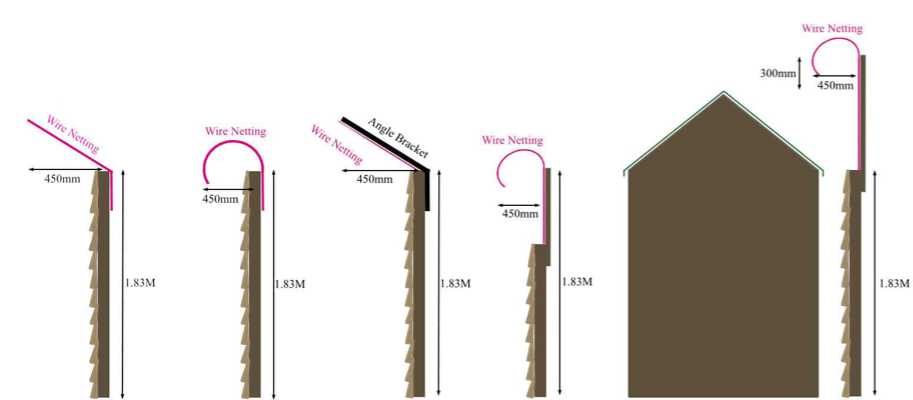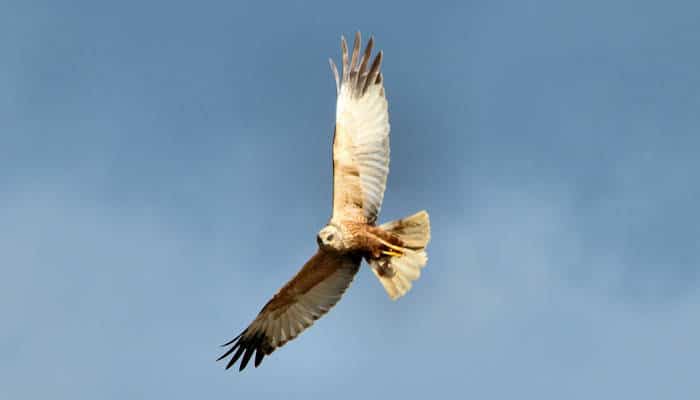Introduction
Predator proofing for rabbits involves making a secure area that stops any predators from getting in to your bunny’s environment. So, if you intend keeping your rabbits in an outdoor hutch and run. Or allowing them free time in your garden. Ensuring their safety is vital, and you must not overlook providing them with protection from predators. Therefore, this post explores the rabbits predators, and some methods of keeping them out of your rabbits space.
Table of Contents
Ground Dwelling Rabbit Predators.

You can find them everywhere in the UK, including towns and cities and have similar agility. As a result, they can both climb or jump over a 1.83 metre (6ft) fence. However, not seeing foxes does not mean they are not present! Foxes are most active and hunt at night because there’s less human activity, especially in urban areas.
Common to the UK mainland, and some offshore islands. Hence, Stoats live in various habitats near their principal food source, rabbits, and can climb walls and fences.
Common to the UK mainland. These small predators have a diet of mostly small rodents and birds, but will also take young rabbits.
Common to the UK mainland, except for northern Scotland. Mink live close to rivers, streams, and wetlands, and anything they can catch they will eat, as well as your rabbit.
Common to woodland, grassland, marshes, and riverbanks in southern and eastern England, Wales, and Scotland.. This predator is nocturnal and has a wide range of prey. However, its top choice for food is rabbit.
Common to the UK mainland, living in mainly, but not limited to, woodland. Their diet includes mice, rats, squirrels, and rabbits.
Rare, but with some help, it’s returning to its historical woodland habitats in the UK from Scotland. Diet will eat anything, as well as rabbit.
Predator Proofing a Hutch and Run.
When keeping rabbits outside in a hutch or shed with a run:
- You should construct the hutch or shed using quality timber, with no gaps in any cladding.
- Use bolts with padlocks or spring clips to secure the keepers accesses.
- Construct the run using materials strong enough to give protection, not just to keep rabbits confined.
- Use heavy gauge small mesh wire netting, not chicken wire, as rabbits and predators can chew through it.
- Extend the wire mesh 300mm below the ground to stop rabbits digging out, and predators digging in.
- A well-built hutch or shed and run should give adequate protection from ground dwelling and airborne predators.
However, if you allow your rabbits to roam unsupervised in the garden at any time during the day. The garden will need to be predator and rabbit proof to keep them safe.
Predator Proofing your garden.
If you intend owning a rabbit and giving it free roaming time alone in a garden. Then it will need adequate protection from predators! However, a constant close human presence while they are in the garden, should provide them with adequate protection.
A predator proof garden needs fencing to a height of 1.83 metres. Preferably with no adjacent buildings, overhanging trees, or bushes that will help cats and foxes gain access. Furthermore, the fence needs to form a solid barrier, and a closely boarded wooden fence with no gaps is ideal.
But we need to ensure that cats and foxes cannot easily jump, or climb over the fence. By fixing wire netting along the top of the fence, angled at 45 degrees, or rolled outwards. Or running a small mesh wire net along the top supported with brackets angled outwards at approximately forty-five degrees.
However, if your existing fences are less than 1.83 metres high, or there are outbuildings close to them. You can extend them using well supported wire netting angled, or rolled outwards, at the top.

Keeping adjacent bushes trimmed to well below the top of predator proofing fences, if you’re unable to remove them entirely. While removing overhanging tree branches, able to support cats and foxes, will ensure they stay out of your garden.
Airborne rabbit predators

Although its primary targets are fish and birds. This large airborne predator with a wingspan of 200 to 240cm. Is an opportunist and will take rabbits, given an easy target, and the space it needs for a diagonal attack.
Primary targets are birds and mammals and may hunt in pairs, with one distracting the prey while the other attacks. The second largest airborne predator in the UK, with a wingspan of 204 to 220cm. Needs open space to carry out a diagonal or horizontal attack.
Although with a wingspan of 175 to 195cm, is the third largest resident of the UK. Prefers to hunt by flying low over open country. However, the Red Kite lacks the strength in its talons to take an adult rabbit.
With a wingspan of 113 to 128cm, the Goshawk is fast and primarily targets birds and mammals. With a preference for hunting over open grassland from perches on the edges of woodland. Where it uses its speed, determination, and agility to take rabbits.
The most common bird of prey in the UK has a wingspan of 113 to128cm. The Buzzard hunts from perches or hovering over the ground and swooping on its prey, which includes rabbits.
Wingspan 100 to 120cm. This rare summer visitor hunts, flying low over open country for its diet of small birds and mammals.
Wingspan 100 to 120cm. This rare summer visitor hunts, flying low over open country for its diet of small birds and mammals.
Wingspan 100 to 120cm. Looks and listens for small birds and mammals to pounce upon while flying low and slow.
More information on birds of prey is available by searching the RSPB website.
Predator proofing - preventing airborne attack
Covering the area with netting is the only totally effective method of protecting rabbits while they are free roaming outdoors. So, if you live where large birds of prey are a common sight, I strongly recommend you do so. That said, not seeing a bird of prey does not mean you never will! Because they now have legal protection and reintroduction programs to return them to their historic habitats across the UK. Therefore, you need to provide your rabbits with some means of escape from a threatened attack.
Adult rabbits are, by instinct, wary and run for cover when they feel threatened by large flying objects. Hence, eagles, goshawks and buzzards use a diagonal or low level horizontal attack to take adult rabbits by surprise. But, need enough open space to do so successfully. Therefore, limiting open space by adding extra cover will help deter them.
In a garden with high fences and no trees, an airborne attack is less of a risk but not impossible. However, as you should give your rabbits covered areas for protection from sun and rain. Combining these with a safe escape route using one or more tunnels, while avoiding large open areas. Will increase your rabbit’s ability to evade an attacker if one appears over the fence. But trees within 100 metres of your garden provide hunting perches for goshawks and buzzards. Increasing the risk of airborne attacks.
My Rabbit Predator Proofing
When I started keeping free roaming rabbits, I installed plastic spikes on top of my larch wood panel fences. Primarily as protection from cats, but they are not 100% effective! A fact that was proved to me by my rabbits bolting through the door, closely followed by a cat. Therefore, I do not recommend you use them for predator proofing!
But this incident pushed me into researching rabbit predators and methods of preventing their attacks. Hence, my 12 x 3 metre garden, with wire netting on top of 1.83 metre fences, resembles a small prison. Mainly because it was a rush job to solve the cat problem, which I intended to improve. But two years later it’s still there!
Because having the extra height provided by the wire will help protect my rabbits from birds of prey. By enabling them to spot a threat before it appears over the fence, giving them extra time to reach safety. My rabbit’s safe route is to one side of the garden, provided by a garden furniture, hutches and tunnels. From which they exit on the patio 2 metres from their access to the house and safety.

Does my safe route work? Yes, they’ve used it to escape from perceived threats, any large object flying low over the garden. Sea gulls, rooks, crows and low-flying aircraft, but so far no birds of prey!
conclusion
Assessing the predators, their habitats and risks in your location is fundamental to predator proofing. Because knowing the enemy is better than guesswork when planning the defences to protect your rabbits. While visits from birds of prey to gardens are rare, you should not ignore them completely. Rare they may be, but it only takes one visit to lose your hairy hopping friend.
However, predator proofing against cats and a safe escape route is the basic requirement needed. Leaving rabbits unsupervised in a garden with no predator proofing or escape route is putting your pet at risk! So, please don’t do it! To get the best from free roaming rabbits outside, they need to be, and feel safe! If they do not feel safe, they’ll be reluctant to spend extended periods outside, enjoying the free roaming lifestyle.

